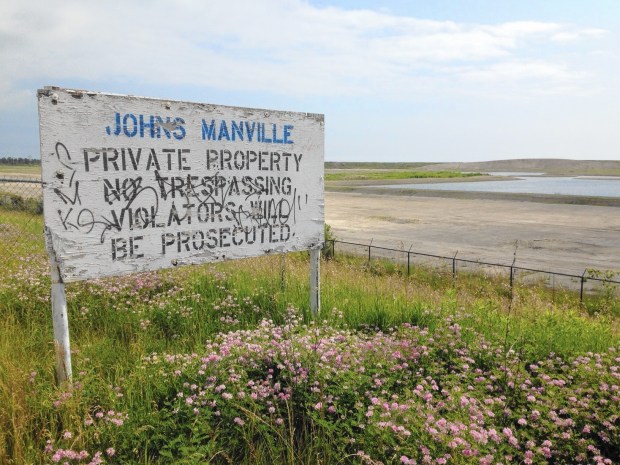American flag pins and mini-U.S. flags were two commodities in demand the other day in downtown Waukegan. Dozens of new Lake County citizens were wearing and waving them proudly.
It was an inclusive touch by HACES (Hispanic American Community Education and Services), which sponsored welcoming these new Americans into that exclusive club of U.S. citizenship. Becoming U.S. citizens was celebrated in the Eleanor Murkey Community Room at the College of Lake County Lakeshore Campus on Saturday.
Tales from the couple hundred assembled told of a long voyage to become a true American through the naturalization process. Just in time for the Nov. 5 election, they can vote, which many say is now their right and duty.
They can take advantage of the opportunities the U.S. offers and partake in that at-times-elusive American dream. Others have quickly applied for their U.S. passports.
Mentoring new immigrants, mainly Hispanics, to become citizens is one of the main focuses of HACES, headquartered on Greenwood Avenue on Waukegan’s North Side. Founded in 2005 by María Elena Jonas and Mario Pena, its passionate staff and volunteers address community issues, including immigration, poverty, healthcare and education.
In the past year, the non-profit has helped nearly 250 residents in Lake County and Kenosha County, Wisconsin, mostly from Mexico, and others who have come from Central and South America, prepare for their citizenship tests.
According to the U.S. Census Bureau, about 22% of Lake County’s population, more than 160,000 residents, is Hispanic. According to census data, those of Mexican origin comprise nearly 80% of the total Hispanic population.
Regionwide, an estimated 450,000 Mexican-Americans live in suburban Cook County. About 514,000 are spread across Lake, Will, McHenry, DuPage and Kane counties. Kane County has the highest percentage of Mexican-Americans in the state — 27% of the population.
Overwhelming numbers of Lake County immigrants pass the citizenship test with the help of volunteer instructors. The exam is the final step in becoming an American for those who have been in the country for at least five years. If you think that test is easy, think again.
An Associated Press story earlier this month related how a University of South Carolina-Beaufort professor requires his American government class students to take the test given to immigrants seeking U.S. citizenship. Kevin Dopf told the AP that 30% to 35% of them pass the exam.
“The rest of them are clueless,” he said. “I mean, they’re just clueless.”
Doesn’t say much for South Carolinian collegians. Most immigrants seeking citizenship have to take the test in English.
Illinois requires a high school semester of civics education, a class on local, state and federal government institutions and how policy is made, along with the rights and responsibilities of citizenship. Back in the day, the state gave us the choice in our junior year of taking a civics test or taking a semester of civics.
For those who didn’t test well, we opted for the class. Failing the test meant you ended up in the classroom anyway.
The class was taught by Mr. Pyle, who objectively drilled into us how American governmental entities work. It was worthwhile for those interested in the machinations and groundwork of democracy.
Unfortunately, many of us have forgotten those civics lessons, or didn’t pay attention in class. One recent survey indicates a third of American adults can’t name the three branches of government. Spoiler alert, the answer is executive, legislative and judicial.
Recent immigrants who have taken the citizenship test are more in tune with how the Constitution works, who their legislative representatives are and U.S. democratic institutions as a whole. Passing the exam is a milestone, a point of cherished pride and an earned achievement for those who have completed the journey.
It takes hard work, determination and courage to take that step, according to those who have gone the naturalized route to citizenship. Unlike those of us who are privileged citizens because we happened to be born in the U.S.
After living here for nine years, Yuri Fajardo finally took her citizenship exam. “I regret I did not do it sooner,” she said, citing three reasons immigrants are hesitant to take the test: Language barrier, cost and fear of failure. It currently costs $725 to apply for U.S. citizenship, which includes $640 for the naturalization form and $85 for the biometrics fee for background checks.
Unlike some who don’t believe immigrants bring anything to the vast U.S. table, state Rep. Laura Faver Dias, D-Grayslake, a former HACES volunteer instructor herself, told the new citizens, “Despite what you hear, you are valued in this community, valued in this county, valued in this state, valued in this country.”
With their U.S. flags and pins, along with certificates of recognition from the state legislature delivered by state Rep. Rita Mayfield, D-Waukegan, the new citizens left the ceremony on a bright Saturday with a future of bright American expectations.
Charles Selle is a former News-Sun reporter, political editor and editor.
sellenews@gmail.com
X: @sellenews




